
Page 41
http://threesology.org
Note: the contents of this page as well as those which precede and follow, must be read as a continuation and/or overlap in order that the continuity about a relationship to/with the typical dichotomous assignment of Artificial Intelligence (such as the usage of zeros and ones used in computer programming) as well as the dichotomous arrangement of the idea that one could possibly talk seriously about peace from a different perspective... will not be lost (such as war being frequently used to describe an absence of peace and vice-versa). However, if your mind is prone to being distracted by timed or untimed commercialization (such as that seen in various types of American-based television, radio, news media and magazine publishing... not to mention the average classroom which carries over into the everyday workplace), you may be unable to sustain prolonged exposures to divergent ideas about a singular topic without becoming confused, unless the information is provided in a very simplistic manner.
While the presently observed standards of memory investigation is to view it in terms of an individual, it is of need to expand our research horizons and apply it to groups, to nations and the whole of the species, as well as all animate and inanimate items of perception... even if it is not your job to do so. You don't always have to use income as the incentive for investing time and energy into a project. As such, it is of value to consider that one of the symptoms of memory loss amongst humans is the recurrence of social problems. The social processes of governance no doubt are a causal factor in such a symptom of memory loss, that have not even been considered seriously by Sociologists, Psychologists and Philosophers. The closest society has come to this appreciation is the quote "Those who fail to remember the past are doomed to repeat it". But such a statement is not viewed through the lens of an investigator of wide-spread memory loss affecting an entire society, much less multiple ones at the same time... and that they themselves are subjected to the effects of such a memory loss as well... and are therefore unlikely to acknowledge such a condition as an abnormality of memory. Additionally, if (whatever we describe) as intelligence deteriorates in a predictable fashion, as is suggested by the previous excerpt from a much larger article involving a discussion of memory abnormality; cataloguing the progressively defined steps and associating them with a given hemisphere and underlying structure— will enable us to better appreciate the brain's architecture, plumbing and wiring that may be adaptable to an AI system through a reverse engineering effort.
One form of interesting memory is called "Instinctual memory". Or memory that an organism is supposedly born with such as a plant following the path of Sun, or a reflex such as a sneeze, or the beat of a heart, breathing, etc... And yet, when we use such a word as "instinct", there is an inclination to think in terms of that which is inherent, and not as part of a process that is evoked due to certain conditions we are subjected to. Many of us do not permit ourselves to think outside the box of convention when dealing with labels, ideas, and definitions. Our herd mentality far too often steps in and guides our behavior. While some readers may want to limit the definition of a categorized type of memory (such as instinctual memory) to human behavior, it is of need to mention other non-human forms as well, because memories are sometimes recalled due to an associated physiological event or external clue such as an order, odor, sound, sensation or light. Because we can denote physiological attributes of memorization, we must wonder if the physiology of a mechanized AI system will likewise develop with a similar accountability of memory. Defining memory solely in human terms may cause us to overlook a larger definition that we need to be concerned with, because an AI system subjected to "physiological" stresses may no doubt affect its ability to memorize and recall memorized data. Memorization need not be limited to human-like receptor modes or limitations. Different forms of memory are possible by different types of connections.
Connectionism, or neuronlike computing, developed out of attempts to understand how the human brain works at the neural level and, in particular, how people learn and remember. In 1943 the neurophysiologist Warren McCulloch of the University of Illinois and the mathematician Walter Pitts of the University of Chicago published an influential treatise on neural nets and automatons, according to which each neuron in the brain is a simple digital processor and the brain as a whole is a form of computing machine. As McCulloch put it subsequently, “What we thought we were doing (and I think we succeeded fairly well) was treating the brain as a Turing machine.” Creating an artificial neural network It was not until 1954, however, that Belmont Farley and Wesley Clark of MIT succeeded in running the first artificial neural network—albeit limited by computer memory to no more than 128 neurons. They were able to train their networks to recognize simple patterns. In addition, they discovered that the random destruction of up to 10 percent of the neurons in a trained network did not affect the network's performance—a feature that is reminiscent of the brain's ability to tolerate limited damage inflicted by surgery, accident, or disease. 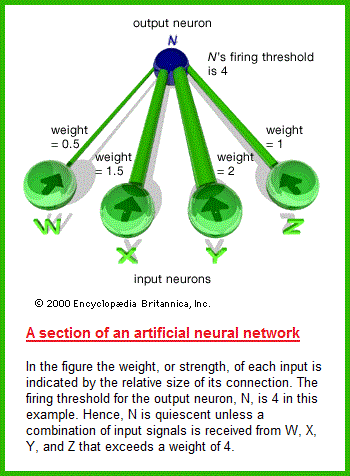 The simple neural network depicted in the figure illustrates the central ideas of connectionism. Four of the network's five neurons are for input, and the fifth—to which each of the others is connected—is for output. Each of the neurons is either firing (1) or not firing (0). Each connection leading to N, the output neuron, has a “weight.” What is called the total weighted input into N is calculated by adding up the weights of all the connections leading to N from neurons that are firing. For example, suppose that only two of the input neurons, X and Y, are firing. Since the weight of the connection from X to N is 1.5 and the weight of the connection from Y to N is 2, it follows that the total weighted input to N is 3.5. As shown in the figure, N has a firing threshold of 4. That is to say, if N's total weighted input equals or exceeds 4, then N fires; otherwise, N does not fire. So, for example, N does not fire if the only input neurons to fire are X and Y, but N does fire if X, Y, and Z all fire. Training the network involves two steps. First, the external agent inputs a pattern and observes the behaviour of N. Second, the agent adjusts the connection weights in accordance with the rules:
The external agent—actually a computer program—goes through this two-step procedure with each pattern in a training sample, which is then repeated a number of times. During these many repetitions, a pattern of connection weights is forged that enables the network to respond correctly to each pattern. The striking thing is that the learning process is entirely mechanical and requires no human intervention or adjustment. The connection weights are increased or decreased automatically by a constant amount, and exactly the same learning procedure applies to different tasks. Source: "Artificial Intelligence (AI)." Encyclopædia Britannica Ultimate Reference Suite, 2013. |
And yet, what if the human brain isn't the appropriate model we need to use in designing an advanced AI computer? What if the word "computer" is just as superficially crude as claiming the human hand is a claw or paw, or that the nose is a beak? Though such terms were thought conversationally accurate during the 1700s in America (before it was called America), we now look upon them as being rather humorous... even if in the future our usage of the word "hand" may encounter a similar level of jocularity. Comparing the brain of humans to a computer may well bolster the ego of some wanting to find a complimentary distinction to yet another body part they possess, yet to others who are able to imagine a far more reaching potential, will eagerly claim that the word "computer" is equally demeaning. In short, to some, the brain is not a computer... it is something with far more potential that no electronic-based apparatus can compare with. While some may use the word "soul" as their preferred label of distinction, others think this word is too limiting as well... that the word "soul" is a harsh, crude and superstitious sentimentality which limits potential because it limits explorations by its various nature of pretending to be some ultimate achievement. The same goes for the development of an AI system. Using the word "computer" in describing the human brain is just as limiting as using the phrase "human brain" in describing an AI system.
The foregoing image brings to mind a pendulum, though a metronome (music) or seismograph (earthquakes) have similar reverberating oscillations in my memory. If I use a box to place the image in, and use boxes form multiple images, the usage of a square-like "box" becomes part of the images being presented as a type of illustrated isolationism. However, if I were to use other designs, the reader may then bring to mind an embodied cell, molecule or elementary particle structure; and the pendulum can thus be transformed into a gyroscopic... or method of equilibrium... like the three semi-circular canals of our inner ear. The usage of any one structure can be a cause for creating an immunity to the presence that causes us to disregard the fact that the internal program can be altered by the outer structure... like a person's personality being altered by their self-interpreted image, or their image as described by someone's words or behavior that is disparaging, complimentary, or establishes a notion of mediocrity (un- or under-importance). In other words, the design of electrical components and how they are housed, plays a part in the overall "personality" and ultimate functioning of an AI System... whether they are self-aware or not.
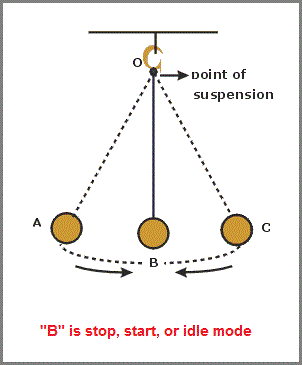 |
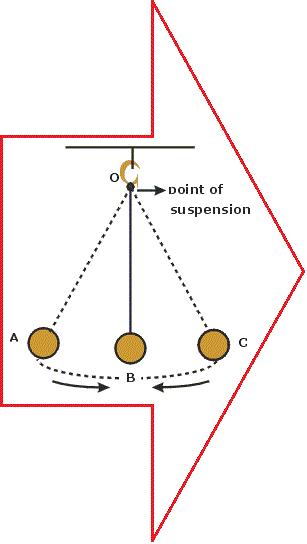 |
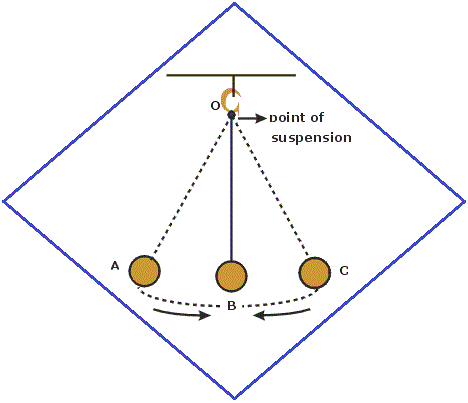 |
Some images help us to better remember a given representation. They act as memory cues, much in the manner of a mnemonic. A study of mnemonics may be a useful tool since the usage of both analog and digital formulas are methods which assist in the storage of memory by way of a given (binary) methodology.
(A mnemonic is) any device for aiding the memory. Named for Mnemosyne, the goddess of memory in Greek mythology, mnemonics are also called memoria technica (Latin: “memory technique”). The principle is to create in the mind an artificial structure that incorporates unfamiliar ideas or, especially, a series of dissociated ideas that by themselves are difficult to remember. Ideally, the structure is designed so that its parts are mutually suggestive. Early methodologies Numerous attempts have been made to invent mnemonic systems, or generalized codes to improve the all-around capacity to remember. The Greek and Roman system of mnemonics was founded on the use of mental places and signs or pictures in terms of the location of the items of interest. The method combines a familiar structure (locus) and the item or thing to be remembered (res). This mnemonic method is referred to as loci et res, or method of loci, and is an effective way to remember a series of items. The most usual method is to choose a large house in which the rooms, walls, windows, decorations, and furniture are severally associated with certain names, phrases, events, or ideas by means of symbolic pictures. To recall these items, it is necessary only to search the rooms of the house mentally until the particular place where the imagination deposited them is discovered. In accordance with this system, if it is desired to fix a historic date in the memory, it is localized in an imaginary town divided into a certain number of districts. Each district has 10 houses; each house has 10 rooms; and each room has 100 quadrates, or memory places. They are partly on the floor, partly on the four walls, and partly on the roof. By means of this system, the traditional date of the invention of printing in Europe (1440) could be fixed in the memory by mentally placing a book or some other symbol of printing in the 40th quadrate of the fourth room of the first house of the imaginary town.
Later developments A related method, called linking or chaining, associates any pair of items—a pen and a chair, for example—and then links those items with a third, the chain proceeding indefinitely. Interaction, as opposed to mere association, is necessary—one could imagine the pen writing on the chair, for example—as one word aids in recalling the next. Associations may even link to tell a story. This method has proved effective in use with grammar-school children as well as with adults. A similar technique is the peg-word system, a memory aid that involves linking words with numbers. It is utilized by creating mental associations between items to be remembered and items that are already associated with numbers (the latter is a relatively simple task, as the item-number pairs often rhyme). For example, to remember the seven deadly sins—lust, pride, greed, anger, sloth, envy, and gluttony—the number one could be associated with a bun, two with a shoe, three with a tree, four with a door, five with a hive, six with sticks, and seven with heaven. Then lust would be remembered by imagining a man drooling over a cinnamon bun, pride would be remembered by picturing a man polishing his expensive shoes, greed would be remembered by envisioning the word hanging from a tree in place of fruit, and so on. A more common mnemonic device is rhyming. Grouping items in rhymed verse has long been a popular mnemonic technique, from the “gender rhymes” of the Latin grammars to the verse for remembering the number of days in the months of the year (“Thirty days hath September, April, June, and November…”). Other examples include “i before e, except after c” and “In 1492, Columbus sailed the ocean blue.” Another method, chunking, involves grouping individual pieces of information in a manner that makes them easier to remember (i.e., relation, hierarchical importance, function, and so on). For example, the individual digits 1, 9, 6, and 1 may be easier to remember as the year 1961; the digits 6, 2, 5, 4, 3, 9, and 1 might be more readily recalled as the telephone number 625-4391; and a grocery list might be more easily remembered by food category (i.e., fruits, vegetables, and so on). Acronyms and acrostics are also useful mnemonic devices. An acronym is a familiar or memorable word composed of the first letters of a series of words to be remembered. For example, a widely used acronym for remembering the five Great Lakes—Huron, Ontario, Michigan, Eerie, and Superior—is HOMES. An acrostic is a phrase or sentence in which the first letter of each word stands for the first letter in a list of words to be remembered. For instance, an acrostic frequently used to help mathematics students remember the order of operations is Please Excuse My Dear Aunt Sally (Parentheses, Exponents, Multiplication/Division, and Addition/Subtraction). Acronyms and acrostics can be particularly useful when items must be remembered in a specific order. One point stressed by mnemonists is that bizarre images can amplify the effectiveness of a memory aid, a phenomenon known as the bizarreness effect. The bizarreness effect holds that items associated with bizarre sentences or phrases are more readily recalled than those associated with common sentences or phrases. For example, a student might better remember the five main vowels of the English alphabet (A, E, I, O, U) by visualizing the bizarre sentence An Elephant Is Orbiting Uranus as opposed to the common sentence An Explorer Is Orbiting Uranus. Scientific interest in mnemonics was heightened in 1968 when the renowned Soviet neuropsychologist Aleksandr R. Luria suggested, in The Mind of a Mnemonist, that the field was worthy of deeper psychological study. Luria described a man with synesthesia— a neurological condition in which the stimulation of one the five senses results in the simultaneous stimulation of one or more of the remaining senses— who had a remarkable memory. Jeannette L. NolenSource: Mnemonic." Encyclopædia Britannica Ultimate Reference Suite, 2013. |
AI systems designers can not permit themselves to get stuck in a binary-only mnemonic devise, despite the basic on/off functionality of an electrical switch. You must incorporate flexibility. The passage of time frequently permits yes and no binary options to be altered. This "passage", defined in context as a computer binary event, is a specific (digital) analogy made from a generalized (analog) analogy.

Like intelligence, there are multiple forms of memory, but most are compartmentalized into a short list because this makes it easier for those whose mindset is conventionally directed... though they may believe themselves to be creative and original thinkers. As can be seen in the image above, I added a few to the original illustration which only contained the examples of episodic, primary, reference, secondary and semantic, even though I can think of others. Standards of testability also interfere with the realization of alternative forms and structural components. It is rather silly to think that memory is limited by the few examples printed in textbooks. What arrogance!
While you may not find all the above examples in a standardized psychology textbook, it must be understood that textbooks often recite what mainstream orientations care to discuss publicly. They are fearful that if they permit an atmosphere of uncontrolled brain-storming, their ideas would be shelved. It is little different than the fear felt by politicians who do not want to practice an actual democracy. An actual democracy would permit the people a means to close loopholes that those in government, business and religion take advantage of... and let the majority be damned. Those in authority very often have limited imaginations and will attack those who develop ideas not in concert with views which permit them to maintain an upper hand. If a person learns all they know by way of adhering to fixed academic guidelines or established rules/laws, those who learn to develop greater insight outside these socially observed lines may well be treated as an enemy.
With respect to memorization and conventionalized notions, it is thought that a person never forgets to ride a bicycle... or at least that we once did ride one. That is, if we take into consideration those who never learned (for one reason or another). Recalling that we once did ride, helps us to overcome any anxiety about trying to relearn those skills necessary to be confident in our competency... unless we want to suggest that there is a type of memory mislabeled "bicycle riding", that actually applies to a generality that we use a specific label for. For example, the memory of "riding a bicycle" may be an entrenched recall of an earlier established memory involving a three-point vehicle such as a cart on two wheels pulled by a person or animal. Later variations would have been a chariot, tricycle and its application to the development of the first automobile.
 |
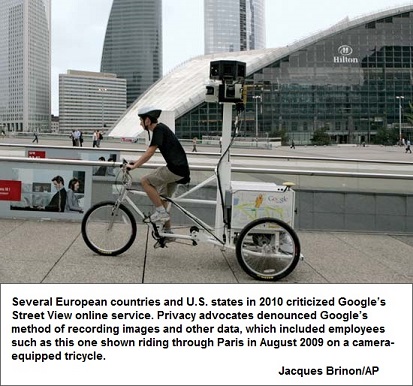 |
|
Adenosine triphosphate as the currency of energy exchange When the terminal phosphate group is removed from ATP by hydrolysis, two negatively charged products are formed, ADP3- and HPO42- (a phosphate group).  These products are electrically more stable than the parent molecule and do not readily recombine. The total free energy (G) of the products is much less than that of ATP; hence energy is liberated (i.e., the reaction is exergonic). The amount of energy liberated under strictly defined conditions is called the standard free energy change (?G?); this value for the hydrolysis of ATP is relatively high, at -8 kilocalories per mole. (One kilocalorie is the amount of heat required to raise the temperature of 1,000 grams of water one degree centigrade.) Conversely, the formation of ATP from ADP and inorganic phosphate (Pi) is an energy-requiring (i.e., endergonic) reaction with a standard free energy change of +8 kilocalories per mole. The hydrolysis of the remaining phosphate-to-phosphate bond of ADP is also accompanied by a liberation of free energy (the standard free energy change is -6.5 kilocalories per mole); AMP hydrolysis liberates less energy (the standard free energy change is -2.2 kilocalories per mole). Source: "Metabolism." Encyclopædia Britannica Ultimate Reference Suite, 2013. |
|
Qualitative tests to distinguish alternative theories At the time that Augustin-Jean Fresnel presented his wave theory of light to the French Academy (1815), the leading physicists were adherents of Newton's corpuscular theory. It was pointed out by Siméon-Denis Poisson, as a fatal objection, that Fresnel's theory predicted a bright spot at the very centre of the shadow cast by a circular obstacle. When this was in fact observed by François Arago, Fresnel's theory was immediately accepted. Another qualitative difference between the wave and corpuscular theories concerned the speed of light in a transparent medium. To explain the bending of light rays toward the normal to the surface when light entered the medium, the corpuscular theory demanded that light go faster while the wave theory required that it go slower. Jean-Bernard-Léon Foucault showed that the latter was correct (1850). The three categories of experiments or observations discussed above are those that do not demand high-precision measurement. Source: "Physical Science, Principles of." Encyclopædia Britannica Ultimate Reference Suite, 2013. |
Subject page first Originated (saved into a folder): Thursday, November 13, 2014... 5:50 AM
Page re-Originated:Sunday, 24-Jan-2016... 08:51 AM
Initial Posting: Saturday, 13-Feb-2016... 10:59 AM
Updated Posting: Saturday, 31-March-2018... 3:55 PM
Herb O. Buckland
herbobuckland@hotmail.com